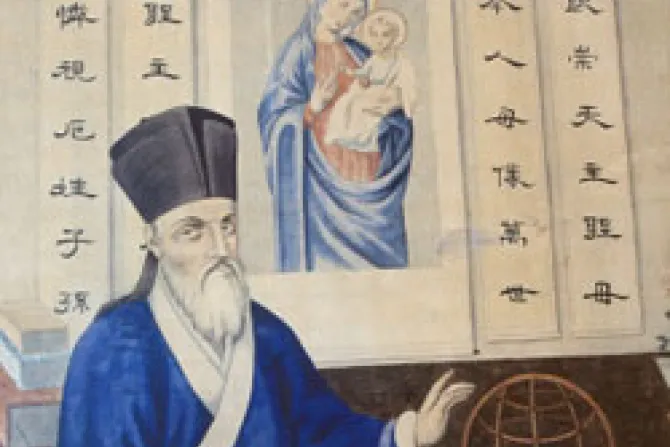Rome, Italy, Jan 25, 2010 / 01:52 am
The cause for the beatification of Jesuit missionary and Servant of God Fr. Mateo Ricci will be re-launched on Sunday evening after a Mass at the Cathedral of San Giuliano in the diocese of Diocese of Macerata-Tolentino.
The first session of the Diocesan Tribunal for his cause of beatification will be held after the Mass. According to Fides, the ecclesiastical court will hear a number of witnesses to ascertain the missionary’s current fame and reputation for holiness.
An historical commission has also been established to collect all the writings and documents attributed to Fr. Ricci, as well as those documents referring to him.
The commission will conclude with a critical study of his writings and will deliver a judgment on the authenticity and value of the documents relating to him.
Also on Jan. 24, Father Matteo Ricci Hall at the Palazo Sarnari will be inaugurated and blessed. The hall will be used for the celebrations planned for 2010.
Fr. Ricci was born in 1552 in the Marche town of Macerata. He became a Jesuit priest and a scholar of mathematics and astronomy before leaving for the Far East at the age of 26.
Ricci spent four years in Goa on the west coast of India before traveling to China. There, he settled in Zhao Qing in the southernmost Guangdong Province and began studying Chinese. During his time there he produced his global Great Map of Ten Thousand Countries, which revolutionized the Chinese understanding of the rest of the world.
A copy of the map recently went on display at the Library of Congress in the United States.
In 1589 the Jesuit moved to Zhao Zhou and began sharing European mathematics discoveries with Chinese scholars. He became known as “Li Madou” and was renowned for his extraordinary memory and knowledge of astronomy. He eventually became a member of the court of Ming Emperor Wanli.
In 1601 he was allowed into the Forbidden City of Beijing, where he worked until his death in 1610.


